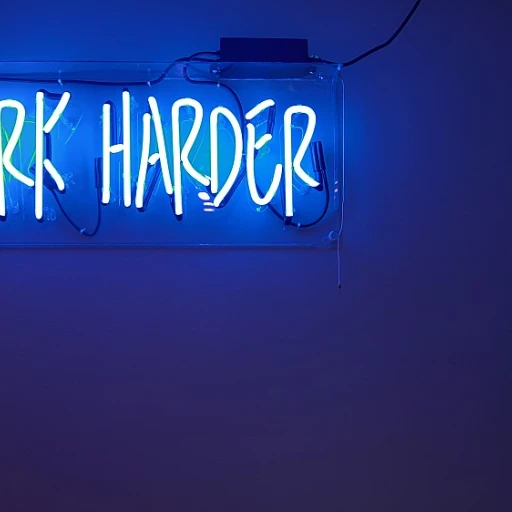Understanding the Candidate's Perspective
The Importance of Seeing the Process Through the Candidate's Eyes
In today's competitive job market, understanding what candidates are experiencing during the job application process is more crucial than ever. Candidates, especially those with sought-after skills, often have multiple opportunities available to them. Therefore, their journey through your application process can significantly influence their decision to join your organization.
First and foremost, it is important for employers to recognize that the application experience can shape a candidate's perception of the company. A cumbersome or opaque process can lead to frustration and ultimately push top talent elsewhere. On the other hand, a seamless, transparent, and respectful process reflects positively on an employer, showing candidates that the organization values their efforts and time.
To achieve this, employers should consider the common hurdles candidates face when applying for jobs. These often include lengthy application forms, slow response times, and unclear expectations. By empathizing with candidates and addressing these issues, companies can create a more inviting application pipeline.
Moreover, embracing diversity and equity in hiring practices is paramount. An inclusive application process recognizes diverse backgrounds and promotes equal opportunity for all candidates, thus strengthening the employer's brand and appeal. For further insights on how to achieve a truly inclusive hiring process, explore the importance of
embracing diversity and equity in your recruitment strategy.
By considering the candidate's perspective, organizations can make meaningful improvements to their recruitment process, leading to more successful hires and long-lasting employment relationships.
Streamlining the Application Process
A Seamless Application Experience
Creating a seamless application experience is essential for attracting top talent and ensuring the efficient use of resources for both candidates and hiring teams. A streamlined process not only saves time but also sets the tone for a positive candidate experience from the get-go.
The Importance of Simplicity
Simplicity is the guiding principle of a streamlined application process. Candidates often face convoluted systems that may include redundant steps or unclear instructions. This can lead to high dropout rates and deter skilled candidates from joining your talent pool. By focusing on ease of use and accessibility, organizations can remove unnecessary barriers and improve their overall applicant journey.
Optimizing Application Platforms
The technology used to manage applications should be intuitive and efficient. Digital tools should allow for easy document uploads, automatic form filling from resume parsing, and clear prompts to guide candidates through the process. Reduce the number of steps required by integrating relevant information on each page and allowing candidates to save their progress at any point.
Implementing platforms that are mobile-friendly is also crucial. Many candidates perform job searches and submit applications from their mobile devices. Ensuring that your application process is adaptable across different platforms will enhance the experience and increase the likelihood of completion.
Cohesion Across Touchpoints
A consistent experience across all touchpoints, from the initial job posting to the final stages of the application, significantly enhances the candidate’s journey. Maintaining consistency in language, style, and the information relayed to candidates makes the process more user-oriented.
Furthermore, having centralized, easily accessible resources that candidates can reference improves their overall understanding of the job expectations and requirements. For more insights on enhancing the application process, refer to the
hiring experience survey insights, which provide valuable perspectives on candidate experiences.
Efforts to streamline the application process are directly linked to better communication, clearer job descriptions, and a strong employer brand, paving the way for a more efficient hiring experience.
Crafting Clear and Compelling Job Descriptions
Designing Job Descriptions that Truly Speak
Creating job descriptions that are clear, concise, and compelling is an essential step in easing the job application process for everyone involved. These descriptions serve as the candidate's initial glimpse into the role and the company. Just as important as understanding the candidate’s perspective and implementing a digital hiring experience are, well-crafted job descriptions set the tone, capture the candidate’s interest, and establish expectations right from the get-go.
Firstly, clarity is key. Job seekers often skim through descriptions to quickly assess whether they meet the qualifications and if the role is indeed a fit. Use straightforward language and avoid industry jargon or overly formal titles that may confuse or deter potential applicants. Each section of the description should be succinct, focusing on a clear headline for duties, responsibilities, qualifications, and the company’s vision.
Moreover, it’s critical for job descriptions to reflect the reality of the role and the non-negotiable qualifications required. This transparency will attract candidates who are not only capable but genuinely interested in the position. Consider adding a brief overview of what a typical day might entail to provide context and excite potential applicants about the prospect of joining your team.
Including a touch of your organization's culture in the job description is also paramount. This could be done by highlighting company values, unique benefits, or aspects of the team that make your company an attractive place to work. This will help candidates envision themselves as part of your company culture, making them more invested in the application process.
Lastly, the structure of job descriptions can greatly benefit from feedback and continuous improvement. Involving current employees in reviewing these descriptions can provide valuable insights into what initially caught their interest. As you refine these descriptions, you help to build a strong employer brand, further attracting top talent to your organization. For more on leveraging the employer brand, refer to our comprehensive
guide on unlocking the secrets of hiring experience feedback.
By crafting job descriptions with care and clarity, you not only streamline the application process but also enhance the candidate experience, ultimately setting the stage for successful recruitment.
The Role of Technology in Recruitment
Integrating Technology in Recruitment
In the evolving landscape of recruitment, leveraging technology has become pivotal in making the application process more efficient and effective. It's not just about using software; it's about transforming how candidates and companies interact with each other, ensuring a seamless journey for everyone involved.
First, consider the role of applicant tracking systems (ATS). These platforms are designed to streamline the application process, making it easier for employers to manage large volumes of applications and for candidates to track their progress. An ATS can save both time and resources by automating tasks that would otherwise be manual and time-consuming.
Moreover, the use of artificial intelligence (AI) in recruitment is revolutionizing the way companies assess candidates. AI-driven tools can help minimize unconscious bias by focusing on skill and performance-based metrics rather than subjective criteria. These tools can also assist in initial screening processes, allowing recruiters to focus their efforts on the most promising candidates.
Another technological advancement is virtual interviewing platforms, which have become especially relevant in recent years. These platforms allow for real-time video interviews, providing flexibility and convenience for both the recruiter and the candidate. This technology not only expands the pool of potential candidates by overcoming geographical barriers but also enriches the interaction with more dynamic communication.
A well-designed recruitment portal or career site is also essential. It should provide a user-friendly interface where candidates can easily find information about available positions, understand the company culture, and apply without technical difficulties.
While technology is a fantastic enabler, it's crucial to integrate it thoughtfully into the recruitment process, enhancing rather than replacing human interaction. Tech should support both candidates and recruiters, creating a balanced approach that maintains the personal touch essential for any successful hire. By incorporating these technological advances, employers can ensure a more efficient, appealing, and inclusive recruitment process, ultimately attracting the best talent.
Building a Strong Employer Brand
Enhancing Employer Brand for a Seamless Hiring Process
Building a strong employer brand is a fundamental aspect of making the job application process more efficient and attractive for potential candidates. An employer's brand is not just a buzzword; it's a crucial element that shapes how prospective talents perceive an organization and its work culture.
A well-crafted employer brand can serve as a beacon, attracting the right candidates who resonate with your organizational values. It's essential to highlight the unique aspects of your company culture, benefits, and growth opportunities. This can be achieved through authentic storytelling and by showcasing employee testimonials that capture the essence of the workplace environment.
Transparency is key. When applicants have a clear understanding of what to expect from the organization, it sets a positive tone from the outset. Consider incorporating multimedia elements such as videos or virtual tours into your career page to provide a vivid snapshot of day-to-day life at your company.
Remember, an employer brand is a reflection not only of current employees but also of how potential candidates relate to your application process, as discussed in prior sections. Streamlining steps, maintaining communication, and providing clear job descriptions all contribute to building trust and positivity around your brand.
Moreover, it is crucial to align your employer brand with the principles of inclusivity and diversity, as these are increasingly important to applicants and can greatly enhance your reputation in the talent market.
By investing time and effort into developing a robust employer brand, you not only simplify the application process but also enhance your chances of securing ideal candidates who are excited and motivated to join your team. This sense of alignment and belonging ultimately contributes to better retention rates and a more harmonious work environment."}
Best Practices for Interviews and Follow-ups
Keys to Effective Interviews
You've navigated the landscape of job applicants and welcomed a few to advance to interviews. The interview stage is a vital opportunity both for candidates and employers to make informed, lasting impressions. A smooth experience at this step can significantly influence your employer brand, a topic we touched on earlier.
Interviewing isn't just about asking questions; it's about creating a dialogue. Begin by establishing a comfortable environment that alleviates candidate anxiety. Consider offering an agenda ahead of time, which can help candidates prepare and show them you're invested in their success.
It's equally important to prepare your interviewers. Equip them with comprehensive information about the candidate, their resume, and the specific roles they're applying for. This preparation not only enhances the focus on finding the right fit but also signals the candidate's importance to the organization.
Streamline Post-Interview Follow-ups
Once interviews conclude, maintaining communication is paramount. Candidates appreciate transparency. Clear communication about timelines for feedback, next steps, and a realistic hiring decision timeline is crucial.
Automate post-interview communications using software where feasible; this is part of the technology's role in recruitment that we discussed previously. Standardized templates for follow-ups can keep your communications consistent and timely.
Follow-ups are an excellent time to extend your organizational culture and values. Encourage candidates, successful or not, to provide feedback about their interview experience. This not only offers insight for continual improvement but also fosters goodwill and keeps your employer brand strong.
A seamless integration of prepared interviewers and effective post-interview correspondence will not only assure candidates of their worth but enhance the overall hiring experience.














